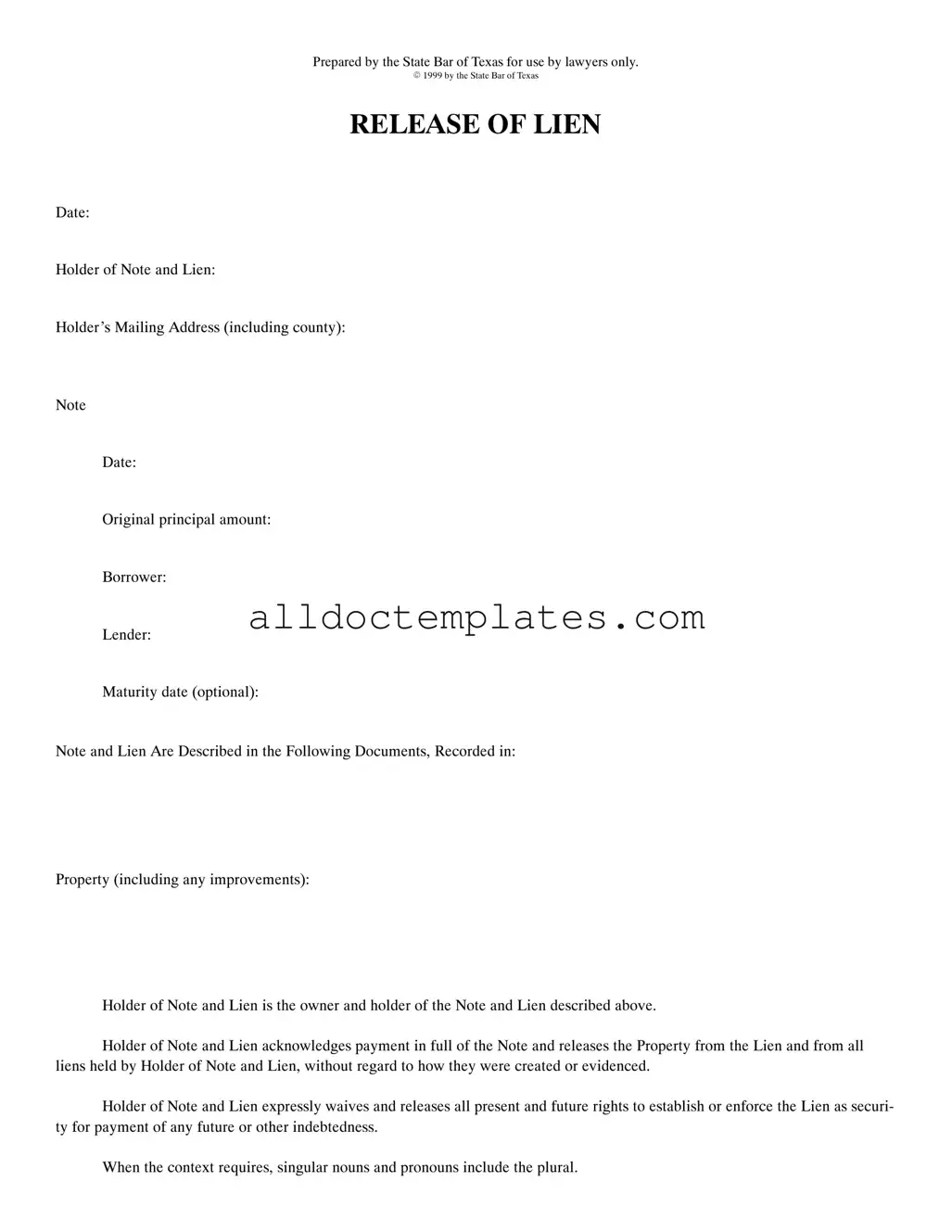Fill in a Valid Release Of Lien Texas Form
The Release of Lien Texas form is a legal document used to formally release a lien on a property, indicating that the debt secured by the lien has been paid in full. This form is crucial for property owners who want to ensure that their property is free from any claims by creditors. By signing this document, the holder of the lien acknowledges the payment and relinquishes any rights to enforce the lien in the future.
Get Your Form Now
